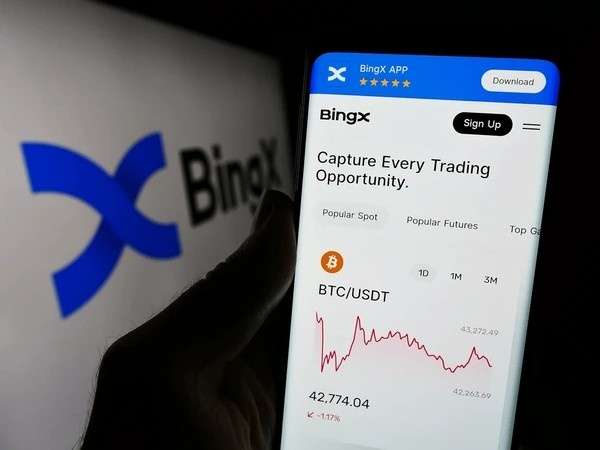When it comes to managing investments, taxes can feel like a heavy burden. This is especially true when selling an asset that has appreciated in value. One tool that real estate investors have used for decades to defer taxes is the 1031 exchange, named after Section 1031 of the U.S. Internal Revenue Code. But does this same strategy apply to cryptocurrency? The answer isn’t straightforward. I’ll walk you through everything you need to know about the concept of a 1031 exchange for cryptocurrency, including its history, limitations, and examples.
Table of Contents
What is a 1031 Exchange?
A 1031 exchange allows investors to defer paying capital gains taxes on the sale of an asset by reinvesting the proceeds into a similar asset. For instance, if you sell a rental property and use the proceeds to buy another rental property, you may qualify for a 1031 exchange. The main advantage is deferring taxes on the sale, which means more money remains invested.
Under current tax laws, the 1031 exchange is explicitly limited to real property transactions. However, cryptocurrency enthusiasts and investors often wonder if this could apply to digital assets. Before diving into the specifics of cryptocurrency, let’s establish some context by exploring the basic mechanics of a 1031 exchange.
How a 1031 Exchange Works
To complete a 1031 exchange, an investor must meet several requirements:
- Like-Kind Property: Both the asset sold and the asset purchased must be considered “like-kind.” In real estate, this typically means properties used for investment purposes.
- Timelines: The investor must identify a replacement property within 45 days of the sale and complete the purchase within 180 days.
- Qualified Intermediary: Funds from the sale cannot go directly to the investor; they must pass through a third-party intermediary.
- No Cash-Out: Any leftover cash (known as “boot”) is subject to taxes.
Below is a table illustrating a simple example of a real estate 1031 exchange:
| Step | Example |
|---|---|
| Property Sold | Apartment building, sold for $500,000. |
| Replacement Property | Office space, purchased for $520,000. |
| Tax Outcome | No capital gains tax due on $500,000; proceeds reinvested. |
Cryptocurrency and the IRS
Cryptocurrency is classified as property by the IRS. When you sell or exchange crypto, any gains are subject to capital gains taxes. This classification has fueled interest in whether a 1031 exchange might apply.
Until 2017, some investors argued that exchanging one cryptocurrency for another qualified as a 1031 exchange. For example, swapping Bitcoin for Ethereum was seen as a like-kind exchange by some because both were considered digital currencies. However, the Tax Cuts and Jobs Act of 2017 amended the 1031 rules to explicitly apply only to real property. As a result, cryptocurrency is no longer eligible for 1031 exchanges under current U.S. tax law.
A Hypothetical Example of a Cryptocurrency 1031 Exchange
Although current laws do not allow it, let’s imagine a scenario where cryptocurrency could qualify for a 1031 exchange. Suppose you bought 1 Bitcoin (BTC) in 2020 for $10,000 and now it’s worth $30,000. You want to exchange your Bitcoin for Ethereum (ETH), which you believe has more growth potential. If a 1031 exchange were permitted, here’s how it might work:
| Step | Example Value | Tax Outcome |
|---|---|---|
| Original Purchase | 1 BTC for $10,000 | No tax at purchase. |
| Exchange Value | 1 BTC for $30,000 worth of ETH | Gains deferred; no tax due. |
| New Basis | ETH basis set at $10,000 | Tax deferred until ETH is sold. |
This hypothetical example illustrates the potential tax benefits, but in reality, such transactions are taxable under current law.
Why Cryptocurrency Doesn’t Currently Qualify
The restriction of 1031 exchanges to real property makes cryptocurrency ineligible. There are key reasons for this:
- Volatility: Cryptocurrencies experience significant price fluctuations, which complicates the concept of like-kind exchanges.
- Lack of Regulatory Clarity: The IRS’s stance on cryptocurrency remains a work in progress, making it difficult to integrate into established tax strategies like 1031 exchanges.
- Enforcement: Allowing crypto in 1031 exchanges could create loopholes for tax evasion, which the IRS aims to minimize.
Alternatives to a 1031 Exchange for Cryptocurrency
While a 1031 exchange isn’t an option, there are other strategies to manage taxes on crypto investments. Here are a few:
Tax-Loss Harvesting
If you have unrealized losses in your crypto portfolio, you can sell those assets to offset gains from other sales. This reduces your overall tax liability.
Long-Term Capital Gains
Holding cryptocurrency for more than one year qualifies you for long-term capital gains tax rates, which are generally lower than short-term rates.
Donating Cryptocurrency
Donating appreciated cryptocurrency to a qualified charity can provide a tax deduction while avoiding capital gains taxes on the appreciation.
A Comparative View of Tax Strategies
| Strategy | Benefits | Drawbacks |
|---|---|---|
| 1031 Exchange (Real Estate) | Tax deferral; compounding growth potential | Limited to real property; strict requirements. |
| Tax-Loss Harvesting | Reduces taxable income | Requires realized losses. |
| Long-Term Capital Gains | Lower tax rates | Requires holding for over a year. |
| Donating Cryptocurrency | Tax deduction; no capital gains on donation value | Reduces portfolio holdings. |
Potential Future Changes
The growing adoption of cryptocurrency may prompt lawmakers to revisit tax rules. If a 1031-like provision for cryptocurrency is ever introduced, it could dramatically change how investors approach their portfolios. However, such a change would likely come with strict rules to prevent abuse.
Conclusion
While the idea of a 1031 exchange for cryptocurrency is intriguing, it’s not currently allowed under U.S. tax law. For now, investors must rely on alternative tax strategies to manage their crypto portfolios effectively. As the regulatory landscape evolves, it’s essential to stay informed and consult with a tax professional to navigate the complexities of crypto taxation. By understanding the options available, you can make informed decisions that align with your investment goals.





